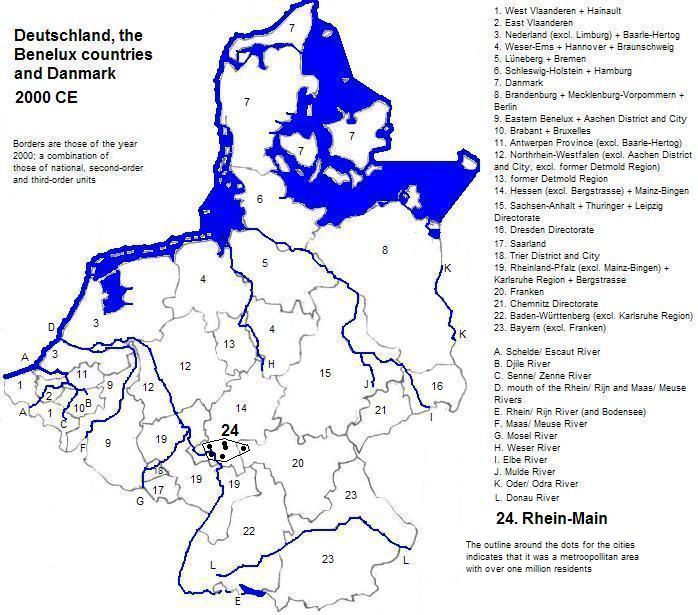
| To Duval Family Home Page | Europe | |
| To Chris Home Page | Deutschland, België, Nederland, Luxembourg and Danmark | |
| To Earth (Geography Home Page) |
The Rhein-Main metropolitan area of Germany,
In Mainz from 1669 to 1672, Leibniz mostly completed the development of his calculus, although it was published later and elsewhere.
| City or metropolitan area | Year | Population | Political entity |
| Mainz | 1000 | 25,000 | Regnum Francorum (Holy Roman Empire) |
| Mainz | 1200 | 25,000 | Imperium Romanum Sacrum (Holy Roman Empire) |
| Mainz | 1300 | 24,000 | Kurfürstentum |
| Mainz | 1700 | 24,000 | Kurfürstentum |
| Mayence | 1800 | 23,000 | République française (French Republic) |
| Mainz-Wiesbaden | 1900 | 193,000 | Deutsches Reich (German Empire) |

_KoblenzR_KasselR_GiessenR_Mainz_MainzBingenR_map_1000_ce.jpg)
_KoblenzR_KasselR_GiessenR_Mainz_MainzBingenR_map_1100_ce.jpg)
_KoblenzR_KasselR_GiessenR_Mainz_MainzBingenR_map_1200_ce.jpg)
_KoblenzR_KasselR_GiessenR_Mainz_MainzBingenR_map_1300_to_1700_ce.jpg)
_KoblenzR_KasselR_GiessenR_Mainz_MainzBingenR_map_1800_ce.jpg)
_KoblenzR_KasselR_GiessenR_Mainz_MainzBingenR_map_1900_ce.jpg)

1. Deutschland in German.
2. Rhine in English.
3. Frankfurt-am-Main is the longer form.
4. Not a cathedral in the sense of the longer form.
5. Hochzeitsturm in German.
6. Russische Kapelle in German.
7. Waldspirale in German.
8. John Stillwell, Mathematics and Its History, 2nd ed. (Springer, 2002), pg. 168.
9. Estimates in Tables of the World's Largest Cities, or in Continental Tables and Maps: Europe, both in Tertius Chandler, Four Thousand Years of Urban Growth, 2nd ed. (The Edwin Mellen Press, 1987). In 1000 Mainz was the largest city in what is now Deutschland, België, Nederland, Luxembourg and Danmark.
10. The city proper also had a charter for a while; during this period it could be considered a Reichsstadt (Free City) distinct from the Kurfürstentum Mainz.
11. The Archbishop of Mainz was also subordinate to the Pope in Roma, but in practice his feudal role was independent of papal direction.